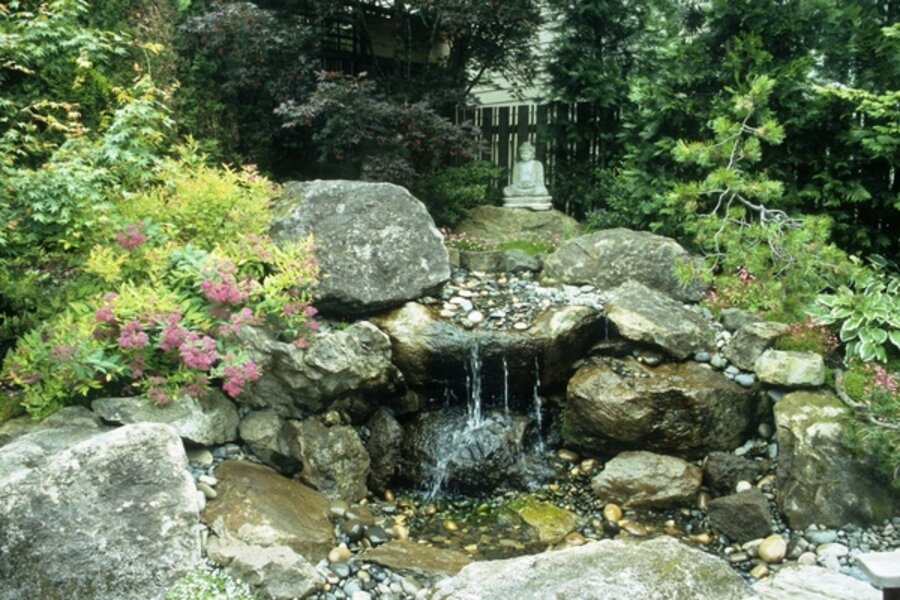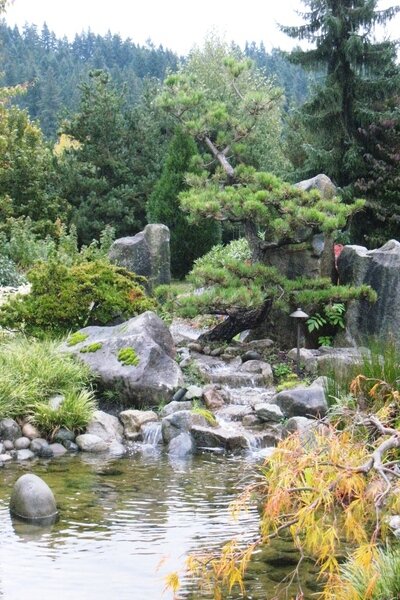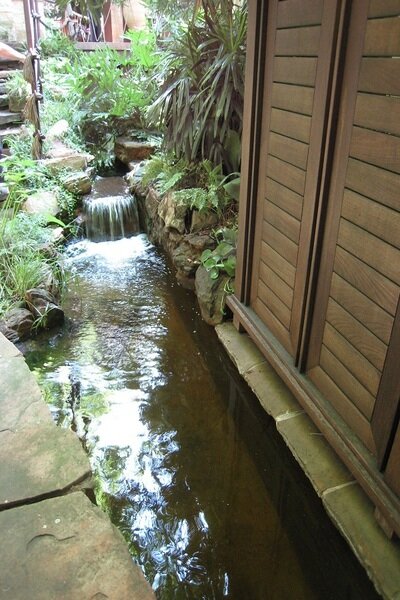Water gardening: When water flows backward
Loading...
Spring is an excellent time for water garden planning, but it was last fall when I was inspired to consider water in a new way. While attending a Garden Writers Association meeting near Seattle, I had a chance to examine the kind of subtle thinking that should precede construction of any water garden or water feature.
Our group was touring the grounds around Willows Lodge in Woodinville, Wash., with the knowledgeable herbalist and designer, Eaglesong — yes, it’s just one name. Her title in the hotel operations is "director of natural beauty."
She has earned the sobriquet. The tour group got a glimpse into what it takes to sustainably manage the naturalized landscape tucked around the buildings and the more formal kitchen gardens that contribute to the cuisine.
How goes the flow?
We turned into an open courtyard, surrounded on three sides by the lodge. The courtyard held a water feature. A little stream gurgled and meandered through rocks and Asian art, and poured into a small pond facing the hotel [first photo at left].
There, Eaglesong [second photo at left; click on arrow at bottom right of first photo to go to the next one] stumped us with a design question. “What’s wrong with this water?” she asked.
The group studied the set-up. We knew the water was chemical-free, because she had already told us that when they reconstructed the run with biologic filters, the native barking frogs returned, sometimes croaking so loudly that guests would ask the management to please switch off the frog chorus recording.
So what was wrong?
Someone noticed that the water was rising up from apparently nowhere. It was true. Like many of these constructions, the water simply appeared at the top of a four-foot-tall pile of rock — not too realistic.
Eaglesong admitted the artifice, but that wasn’t what she was after.
She finally told us — the stream was flowing away from the slough that bordered the grounds, rather than toward the bigger body of water. Of course, that design was chosen so guests could enjoy the little pond from indoors.
But, she said, water flowing the wrong way can be felt. Apparently, we carry within us an innate sense of how things should be, whether we are conscious of it or not.
Water choices
That insightful bit of information can have profound ramifications when planning your own water garden. This isn’t just a paper-and-pencil or a hose-on-the-ground proposition. It calls for certain outdoor observations.
Where does water end up on your property? Is it near the downspout? Or traveling down the driveway? Of course, you probably wouldn’t build a lined pond right over the very lowest spot of a natural bog. A friend of mine did that — the water pressure underneath kept lifting the liner.
But if you start noticing where even the smallest rise and fall happens, you can place anything, from a bird waterer to a full-size pond, in the optimum location for nature’s pattern and your own pleasure.
Plan now, dig later
For instance, let’s say you’d like to create a narrow rill [third photo at left] along the side of your house. Which way should the water flow? Front to the street? Roads often are the lowest part near a property, and visually act like rivers. Or is the slope subtly going the other way, and the water ought to end in your back yard?
Study existing water features in other winter-bare gardens Do they fit in? Are they higher than the house? Is that comfortable? Or would a lower spot be better? Does the water arise from nowhere in the middle of the lawn? Perhaps backing up to a house wall or fence would make yours feel more at home. [See top photo.]
Before you build, choices are cheap. Walk around your property, and check out where water wants to be. It’s likely, that’s where you’ll be comfortable, too.
-----
Mary-Kate Mackey blogs regularly for Diggin' It about water in the garden. She is co-author of “Sunset’s Secret Gardens — 153 Design Tips from the Pros” and contributor to the 'Sunset Western Garden Book,' writes a monthly column for the Hartley Greenhouse webpage and numerous articles for Fine Gardening, Sunset, and other magazines. She teaches at the University of Oregon’s School of Journalism & Communication. To read more by Mary-Kate, click here.










